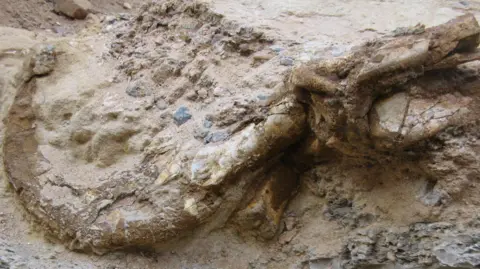Two Plawed Dinosaur Types in the Gobi desert

Climate and science reporter
 The impression of the artist by Masato Hattori
The impression of the artist by Masato HattoriScientists in the Gobi Desert of Mongolia were discovered by two -claw dinosaur types.
The genre called Duonychus Tsogtbaatari was unique in a group of Therizinosaur, which was standing in his hind legs and usually three claws.
It was medium -sized with an estimated weight of approximately 260 kg.
Researchers believe that the long, curved claws of the species and their ability to stretch them strongly will make an effective understanding of it and the vegetation.
 Yoshi Kobayashi, Hokkaido University
Yoshi Kobayashi, Hokkaido UniversityTherizinosaurlar was a group of herbivores or Omnivor Theopod dinosaur, which began 145 million years ago and ended 66 million years ago.
According to Darla Zelenitsky, an associate professor at the University of Calgary, they are exemplified by the Great, long -clawed Therizinosaurus form in the Jurassic World Dominion film and “strange -looking”.
The example was rescued from the Late Cretacea period (100.5 to 66 million years ago).
UN’s educational, scientific and cultural organization UNESCO calls the Mongol Gobi desert the world’s largest dinosaur fossil reservoir.
The region is a particularly important source of fossil since the later Cretaceous period, which is the last three periods of the dinosaur era, representing the final stage of dinosaur evolution.
 Kobayashi et al.
Kobayashi et al.About one foot length, the claws themselves were much larger than the underlying bones.
In addition to better comprehension, two -fingered hands may be used as imaging, digging or challenging weapons.
The most famous Theopods with the Tyrannosaurus Rex are the species in the group of Tyrannosaurids, but Duonychus has developed their two -fingered hands separately from them and the other two -fingers theopods.
The example also maintains the first keratinimy sheath of a terizinosaur, which is an element that covers claws such as human nails, helps to capture defense, movement or prey.





